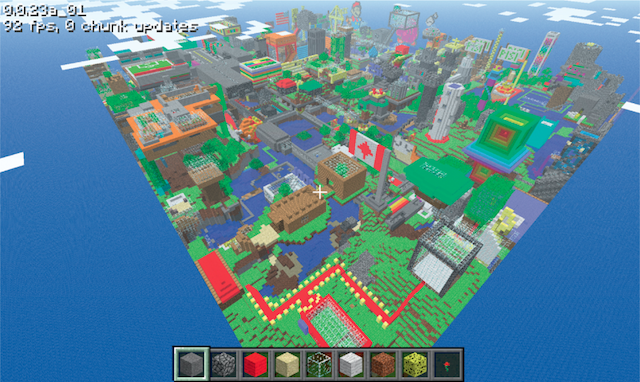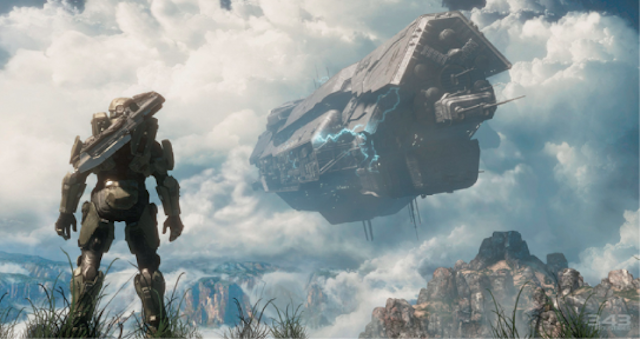
Advertisement

They’ve tried to introduce different kinds of characters, too. Charming rogues, like Uncharted’s mass-murdering treasure pilferer Nathan Drake; beardy depressives like whatever that thrift-worn loser in Heavy Rain was called. They’ve offered parodies of action-adventure movies and unintentional parodies of hard-bitten police procedurals. It’s all been very exciting and frequently quite funny, and that leads us to our second point.
Advertisement
They’re still trying, though. For every game that pulls its plot together into something halfway interesting—Second Sight, a paranormal shooter about being stuck in a weird hospital with some nasty bruises and dangerous super-powers, comes to mind—there are dozens of others that merrily ride the narratology train off a cliff. Rather than bore you with multiple little examples, let’s just settle on one big one. This generation’s Bionic Commando reboot featured a man with a mechanical grabby arm who was trying to avenge his dead wife. Or maybe he was just looking for his dead wife, or perhaps he’d given up on the whole thing but was still sort of upset about it—I wasn’t really paying attention.I certainly was paying attention, though, when a pacy eleventh-hour plot twist revealed that his mechanical grabby arm was his dead wife. Does that sound like a satisfying plot point to you, or does it sound like something you might read in the crazed notebooks of an ancient tramp with a serious head injury? This kind of thing is not particularly remarkable when games sit down by the fireplace to spin yarns. The reason it’s not remarkable, I guess, is because games aren’t narrative mediums by their nature. They’re not just readable, they’re writeable too, and the best games have you, the player, sitting at the center of the entire thing. This has become a cliché to point out over the last few years, but it’s true, so let’s go with it: smart designers have realized that the really good game narratives are the ones you construct for yourself while playing. No need for romantic subplots with mechanical grabby arms there. The tramp with the head injury can stay at home. Not that he has a home. He’s a tramp!
Advertisement
Game campaigns have shrunk a lot over the last ten years. You used to be tooling away doing the same few actions over and over again for 20-odd hours. Now a lot of big winter blockbuster games will give you an afternoon or two of turrets, escort missions and that bit where you fly far above the action bombing everyone from a distance and realizing how terrible war really is. Campaigns are shorter and a bit more varied. A welcome trade-off, probably, particularly because…4. MAINSTREAM GAMES ARE ALSO BIGGER
The campaign is often just a tutorial for multiplayer these days, and then there’s DLC missions, weird off-shoot modes that don’t make any real sense, characters to level up, objects to collect and arrange in imaginary houses and co-op stuff, often arriving carved up into campaigns of its own. Assassin’s Creed III just came out and has a whole separate disc of multiplayer content, and some of it is possibly even quite good. I’d probably enjoy it if it wasn’t exactly the kind of thing you lose the moment you buy a game.5. GAMES ARE EVERYWHERE
This is the truly seismic change, and it’s the one for which I’m not really employing that awkward phrase “mainstream games” anymore. I’ve used that to evoke the classic triple-A boxed game that’s worked on by teams of hundreds, is ushered into the world with misleading television ads, and results in lines around the block when it launches at midnight on a Thursday.
Advertisement

This is a lesson everyone’s been learning. Big budget games now have day-one patches to make them work properly, and day-five patches to fix all the things the day-one patches broke. Every game, from the big hitters to weird smartphone curios, have downloadable content: new levels, new features, new modes, new art. Over on the PC, though, where the real energy in game design is, games are being sold while they’re still unfinished, and then the audience can sit around playing them while their designers prod them toward a completed state. Players can help with the development, in fact: they can nudge designers in the right direction while they work.Games are writeable in more ways than one, in other words. The poster boy for this trend is Minecraft, which is undoubtedly the most important game of the decade. Minecraft is a game about building worlds out of little cubes: knocking together houses, caves, castles, shopping malls—anything at all that comes to your mind. It was initially put on sale when it was still in alpha, a state that suggests that some features had been stuck together and were just about working, but the finished product remained a good way off. Nobody cared, though: the alpha was so much fun that people bought the game in their millions, and the millions of pounds they spent on it have allowed the project to become something astonishing—a movement, a way of life.
Advertisement
Games used to cost $60, so they had to be very similar. Specifically, they had to be the kind of thing that felt like it was worth $60, even if that wasn’t a great recipe for creative fun in itself. Now games can be free, or $2.00, or $150, and that means developers don’t have to be hemmed in by their prejudices regarding their audience’s prejudices about value. This in turn means that developers can do whatever they want—and often what they want to do is return to the games they loved when they were young and bring them back to life again.The arcade’s been reborn, in other words: Space Invaders is a valid design to crib from once more. So are Robotron, Pac-Man, Defender, Missile Command. Games can be 2D again as well as 3D, or sprite-based instead of polygonal. They can run in ASCII. They can loot the past and find something of the future waiting for them back there. They can surprise their audiences with the familiar.8. AND IT’S STILL CHANGING
It’s changing right now, with every unexpected flop and every unexpected hit. The last ten years have been a glorious trash-heap for game audiences, and a little digging will reveal weird musical peripherals, plastic skateboards, controllers with dozens of buttons and joysticks, touchscreens, motion sensors, Facebook log-ins and a hundred other things I’ve forgotten about. Games are the form that always changes, rejecting platforms and technologies every five years or so, but also shrugging off genres, interfaces, prevailing wisdoms, and golden rules just as quickly. That’s why games are so very exciting, and why we can approach the next ten years absolutely certain about one single thing…9. WE HAVE NO IDEA WHAT’S COMING NEXT